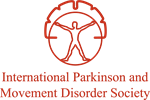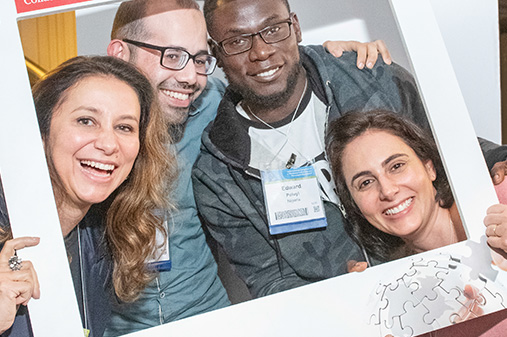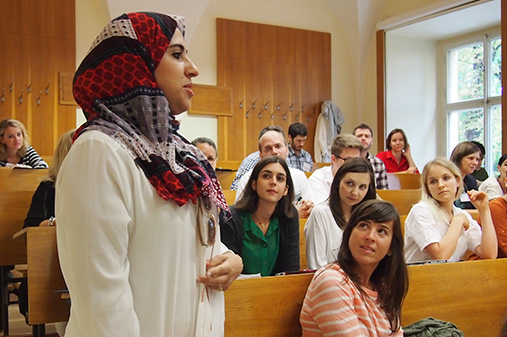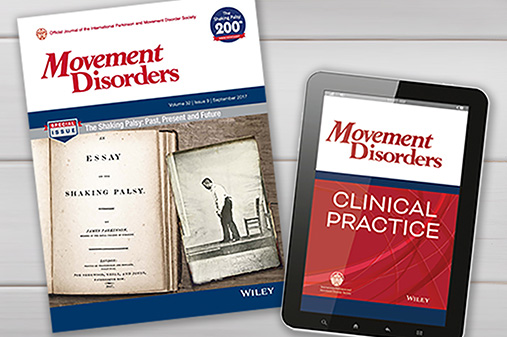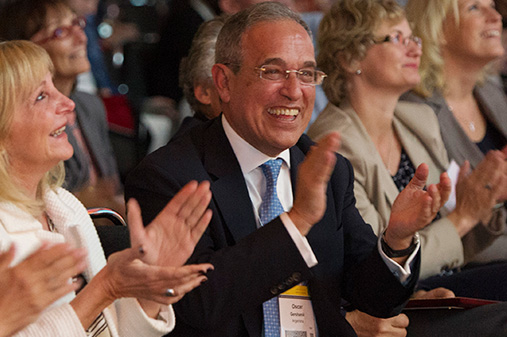Telemedicine Study Group
Have questions? Contact the group’s MDS Staff Liaison, Nick Bauman, at nbauman@movementdisorders.org
Mission
The mission of this study group is to investigate ways of developing telemedicine to improve patient care, education and research for Parkinson’s disease and other movement disorders around the world.
Aims
Aims
- Firstly, to enlist user-friendly technology to reach and provide chronic care to any patient with movement disorders, anywhere in the world.
- Secondly, to educate health care professionals around the world on management of Parkinson's disease and other movement disorders.
- Thirdly, to leverage technology to increase research awareness and effectiveness for Parkinson's disease and other movement disorders. Fourthly, to serve as a frontier for artificial intelligence (AI) applications in movement disorders practice.
- To help increase access to care and to train providers around the world using technology, the International Parkinson and Movement Disorder Society launched a Telemedicine Task Force in 2012 evolving to a Study Group in 2018. The Telemedicine Task Force efforts resulted in pilot projects in patient care and education to lay the foundations for reaching the majority of people with movement disorders.
View group goals
- To study new ways and feasibility in which a telemedicine visit can be implemented (e.g. synchronous vs. asynchronous) to extend highly specialized multidisciplinary movement disorders care and to improve access across the world.
- To study new ways in which telemedicine can be used to extend virtual research visits for patients with movement disorders to reach underserved areas.
- To provide support to the International Parkinson´s Disease and Movement Disorder Society for initiatives regarding educational, research and epidemiological studies.
- To validate and study clinical tools (rating scales, etc), diagnostic accuracy, and screening for movement disorders by using telemedicine.
- To periodically update the innovative ways in which a telemedicine visit can be implemented: equipment and video software, licensure/registration, financial support/reimbursement, video exam room set up, etc.
View the group's: |
MDS Telemedicine Study Group Basecamp Workspace
The MDS Telemedicine Study Group Basecamp Workspace is open to all study group members and is intended to act as a central hub for members to connect, communicate, and share ideas. The Basecamp platform allows users to communicate via instant messaging, share files, and more.
Digital Exclusion in Parkinson’s Disease
Led by Roberto Erro
Digital exclusion refers to the marginalization of individuals who lack access to, or the skills, or have poor attitudes to effectively use, digital technologies. This exclusion might limit their ability to fully participate in telemedicine services, fostering inequalities in healthcare access. A recent study involving 490 people with Parkinson’s disease (pwPD) showed that they experience significantly higher levels of digital exclusion compared to healthy controls, particularly in relation to access and digital skills. Moreover, greater disease severity and the presence of cognitive impairment were found to predict higher levels of digital exclusion (Canoro V et al, MDCP, 2025). Building on this evidence, the present project aims to explore digital exclusion in pwPD from a global perspective, highlighting potential regional and cultural differences, including variations in the types of devices used. Furthermore, the study seeks to investigate a third, previously underexplored, barrier to digital inclusion in PD, that is attitudes toward digital technologies.
Tele-rehabilitation for Parkinson’s Disease: Challenges and Recommendations for Non-Pharmacological Interventions
Led by Maria Elisa Pimentel Piemonte
This subgroup will focus on investigating the unique challenges of delivering non-pharmacological interventions via tele-rehabilitation for people with Parkinson’s disease and other movement disorders. The scope may include, for example, physiotherapy, speech-language therapy, occupational therapy, and other disciplines. We aim to share best practices, identify barriers and facilitators, and develop specific recommendations to optimize safe, effective, and patient-centered care through telehealth. This work is essential for expanding access to specialized interventions for individuals living in regions with limited availability of movement disorder services, thereby reducing health disparities and improving global care equity.
Sustaining Access to Telemedicine for Movement Disorders through global policy, practice and reimbursement insights
Led by Bhavana Patel
This proposal recommends the formation of a dedicated working group focused on projects to help long-term sustainability and expansion of telemedicine services for individuals with movement disorders. Despite the proven clinical benefits and widespread adoption of telehealth during the COVID-19 pandemic, ongoing and future reimbursement by payors remains uncertain in many regions. Without continued support from payors, access to telemedicine services is at risk.
Asynchronous Consultations for Movement Disorders (ACMD) Program
In collbaoration with the MDS Africa Leadership
Led by Mark Guttman
This consultation service matches local physicians with consultants, who are volunteer members of the Telemedicine Task Force, to advise referring physicians about the diagnosis and treatment of patients that they would like to have a second opinion. The pilot program launched in 2015, and MDS continues to provide ongoing support for this project.
- Both referring and consulting physicians have expressed high satisfaction with the program since its pilot in 2015
- An initial evaluation found that the telemedicine consultations impacted the evaluation and treatment in 80% of cases.
- It was awarded a Power of A Gold Award in 2018

| ACMD Access Portal » For ACMD providers and consultants only |
Leadership

Chair
Anhar Hassan

Co-Chair
Ruth Schneider
Steering Committee
Mitra Afshari
Chrystalina Antoniades
Nicholas Bauman
Franklin Chu Buh
Esther Cubo Delgado
Josefa Domingos
Roberto Erro
Christine Esper
Cristian Falup-Pecurariu
Emilia Gatto
Wael Mohamed
Bhavana Patel
Maria Elisa Piemonte
Meredith Spindler
Caroline Tanner
Jinyoung Youn
Published Papers
![]()
![]()
![]()
Recommendations for Virtual Administration of the PSP Rating Scale
- Published paper
![]()
![]()
![]()
![]()
A Modified Progressive Supranuclear Palsy Rating Scale for Virtual Assessments
- Published paper
![]()
![]()
![]()
Provider Experience with Teleneurology in an Academic Neurology Department
- Published paper
![]()
Videoconferencing Software Options for Telemedicine: A Review for Movement Disorder Neurologists
- Published paper
![]()
Adopting virtual visits for Parkinson’s disease during COVID-19 in developing countries
- Published paper
![]()
Telemedicine in an academic movement disorders center during COVID-19
- Published paper
![]()
![]()
The role of telemedicine in reshaping care for movement disorders
- Published paper
![]()
Digital phenotyping in Parkinson’s disease: Empowering neurologists for measurement-based care
- Published paper
![]()
Global survey on telemedicine utilization for movement disorders during the COVID-19 pandemic
- Published paper
![]()
Accelerating Telemedicine for cerebral palsy during COVID-19 and beyond
- Published paper
![]()
Telemedicine for urgent and ongoing health care for patients with Parkinson’s disease
- Published paper
![]()
Coronavirus as a catalyst for telemedicine for chronic neurological disorders
- Published paper
![]()
![]()
The promise of telemedicine for movement disorders - An interdisciplinary approach
- Published paper
![]()
Telemedicine enables broader access to movement disorders curricula for medical students
- Published paper
![]()
A Parkinson's disease tele-education program for healthcare providers in Cameroon
- Published paper
![]()
The past, present, and future of telemedicine for Parkinson’s disease
- Published paper
![]()
Content
Guide: Telemedicine in Your Movement Disorders Practice
Many patients with Parkinson’s disease and other movement disorders, particularly those who are homebound or live in rural areas, are likely to benefit from expanded access to subspecialty care via telemedicine.
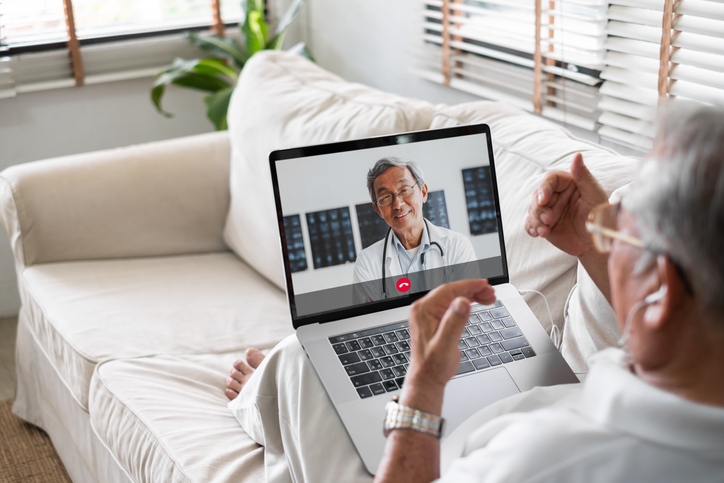
Past Projects
Led by Nicholas Galifianakis, MD, MPH, Alexander Pantelyat, MD
Atypical Parkinsonian Disorders (i.e. MSA, DLB, CBS and PSP) are usually rapidly progressive conditions for which no truly effective symptomatic treatments exist. This unfortunately leads to severe motor but also non-motor disability that includes neuropsychiatric, psychosocial, and spiritual stressors which negatively impact quality of life (QOL). Multidisciplinary care integrating palliative care principles has the potential to improve QOL by prioritizing the relief of suffering. However, the physical burdens of disease in APDs confer a major barrier to this valuable but time-consuming multidisciplinary care. This study set out to determining the feasibility and preliminary efficacy and satisfaction of telemedicine-based delivery of multidisciplinary palliative care to patients with APDs in their own homes, i.e. palliative virtual home visits.
Led by Anhar Hassan
Telemedicine is increasingly used to care for patients with movement disorders, but data regarding its global use are limited. In 2015 the Telemedicine Task Force conducted an online survey of all 6056 members of the International Parkinson and Movement Disorder Society regarding their use of telemedicine. There was a 9.1% survey response rate (549 respondents) from 83 countries. Most (85.8%) were physicians, and most (71%) worked in academic/university practice. Half of respondents (n=287, from 57 countries) used telemedicine for clinical care: email (63%), video visits (follow-up 40%, new 35%), and video-education (35%). Video visits were personally conducted by one-fifth (n=105) of respondents, most frequently to outpatient clinics (54%), patient homes (31%).
Led by Esther Cubo
In order to create a feasible, low-cost, web-based tele-education program about Movement Disorders for undergraduate medical students in low-middle, middle-high income countries with poor access to Movement Disorders specialists, the Telemedicine Task Force launched and completed a new course in partnership with University of Douala, Medical School, Cameroon, University of Buenos Aires, Medical School, Argentina. Through this new program, students received a standardized education on moment disorders from world renowned experts via a webinar series. Each site participated in 7 session covering the basics of movement disorder. Either Medical Students from Cameroon or Argentina demonstrated improvement in Movement Disorders Skills after completing pre and post-course assessments.
Led by Esther Cubo
In order to create a feasible, low-cost, web-based tele-education program about Movement Disorders for health professionals in low-middle income countries with poor access to Movement Disorders specialists, the Telemedicine Task Force launched a new course in partnership with University of Douala. Through this new program, family doctors, neurologists, nurses, psychologists, and physiotherapists received standardized education on moment disorders from world renowned experts via a webinar series for one year, once a month. High satisfaction and knowledge improvement was obtained after this course.
Led by Carolinne Tanner and Piu Chan.
In tandem with a CME course hosted in China, the task force conducted a randomized trial. All participating neurologists received one week training in Parkinson’s disease diagnosis and management. At the end of the week, the community neurologists were randomized either to the intervention group (expert consultation via telemedicine) or to the non-intervention group (routine care without expert consultation using telemedicine). At the end of this study, one year later, adequate feasibility, and high satisfaction was reported among telemedicine users.
Led by Meredith Spindler, Jaime-Hatcher
This Study Group has completed and submitted a tutorial on introducing telemedicine into a movement disorders clinic. The tutorial outlined the steps a clinic must take to acquaint its physicians and patients with the movement disorders technology, including technology software and hardware options and best practices for the first and subsequent telemedicine visits.
2018
1. Asynchronous Consultation in Movement Disorders: The East Africa Hub
M. Dekker, S. Urasa, S. Guttman, W. Howlett, M. Guttman (Moshi, United Republic of Tanzania).
2. Palliative Virtual Home Visits for Atypical Parkinsonian Disorders (PVH-Park Study)
M. Afshari, A. Butala, J. Guenther, A. Pantelyat, N. Galifianakis (San Francisco, CA, USA).
3. Asynchronous Telehealth Consultations for Movement Disorders in Africa
J. Guenther, M. Katz, E. Cubo, N. Galifianakis, S. Guttman, N. Okubadejo, M. Spindler, J. Aldred, M. Guttman (San Francisco, CA, USA).
2016
1. Caring for the majority: Telemedicine management of Parkinson’s disease (PD) in underserved populations in People’s Republic of China: A randomized trial
P.B. Chan, S. Liu, Z. Gu, J. An, C.M. Tanner (Beijing, People’s Republic of China)
2. Survey of telemedicine use among MDS members
A. Hassan, E.R. Dorsey, E. Cubo, C.G. Goetz, B.R. Bloem, M. Guttman, S.L. Heath, M. Katz, M. Spinder, C.M. Tanner, Z. Mari, A. Pantelyat, J.A. Bajwa, N.B. Galifianakis, E.M. Gatto (Rochester, MN, USA)
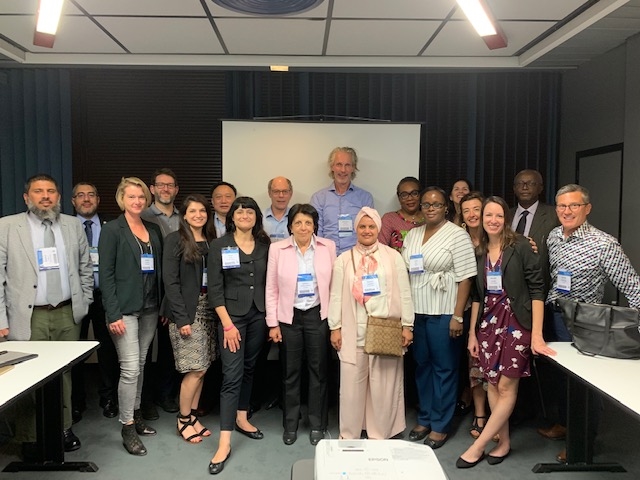
The Telemedicine Study Group in Nice, France, September 2019.
